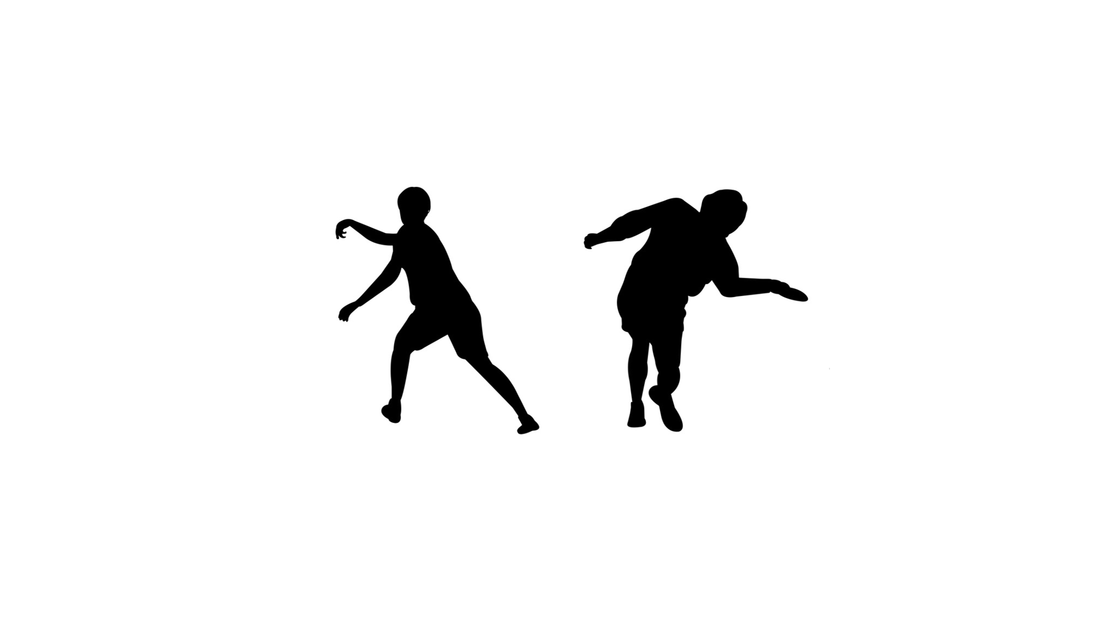The forehand comes very naturally to some players, while others struggle more with getting the right forehand technique/throw. One possible reason is that this technique requires the player to give the disc spin with the wrist. Without enough spin, the disc will flutter in the air and not achieve any particular length or control. Nevertheless, it is considered the easiest way for beginners to get up to an OK level and keep up with fellow players on the trail.

We can divide the execution of a backhand throw into 3 parts. The first is the footwork, the second is the grip and the third and most important part is the upper body.
1. Footwork: With a forehand throw, the footwork is slightly different than with a backhand. Forehand, the so-called X-step is not necessary. Many professional players either walk up to the end of the tee pad quite normally, or put in a small jump on the same foot to push off. With a forehand, you can of course also throw standing still. Here you just have to find your own technique and what is most comfortable for you. One of the only things to think about is shifting the weight from the back leg to the front leg, as the momentum generated by the lower body will be transferred to the disc and reduce the load on the shoulder and elbow. For a visual example, see the video below 2:20 .
2. Grip: When throwing a forehand, you can grip the disc in many different ways, and there is no concrete answer as to what is right and wrong. The most important thing for beginners is to find a grip that is comfortable and provides a firm and solid grip around the disc. The most common grip for forehand throws is a so-called pistol grip, where the index finger and middle finger form a pistol on the inside of the disc. For example on grip, see the video below from 00:50 .
3. Upper body: The same principles apply as in the backhand, i.e. you have a "reachback" and a "pull-through". But you only pull the disc out to the side of the body, without pulling too far back. The forehand can be compared to a baseball throw, only that instead of throwing the ball over the head, one throws a disc from the side of the body. As mentioned above, forehand throws often do not generate enough spin, so it is important to flick the wrist in the throw. The more spin, the more distance. For a visual example, see the video below 3:52 a.m.
It is generally wise to use overstable discs for forehand throws. When you spin the disc yourself with your wrist, it is very easy to spin over the disc, so you want to throw a disc with little spin. We recommend buying Active Magician as your first forehand disc. Read more about 13 discs we recommend for beginners in frisbee golf .
We have a similar guide for backhand throws . If you want to learn more about other throwing techniques, basic theory and recommended beginner discs, check out our complete guide to Frisbee golf for beginners .

